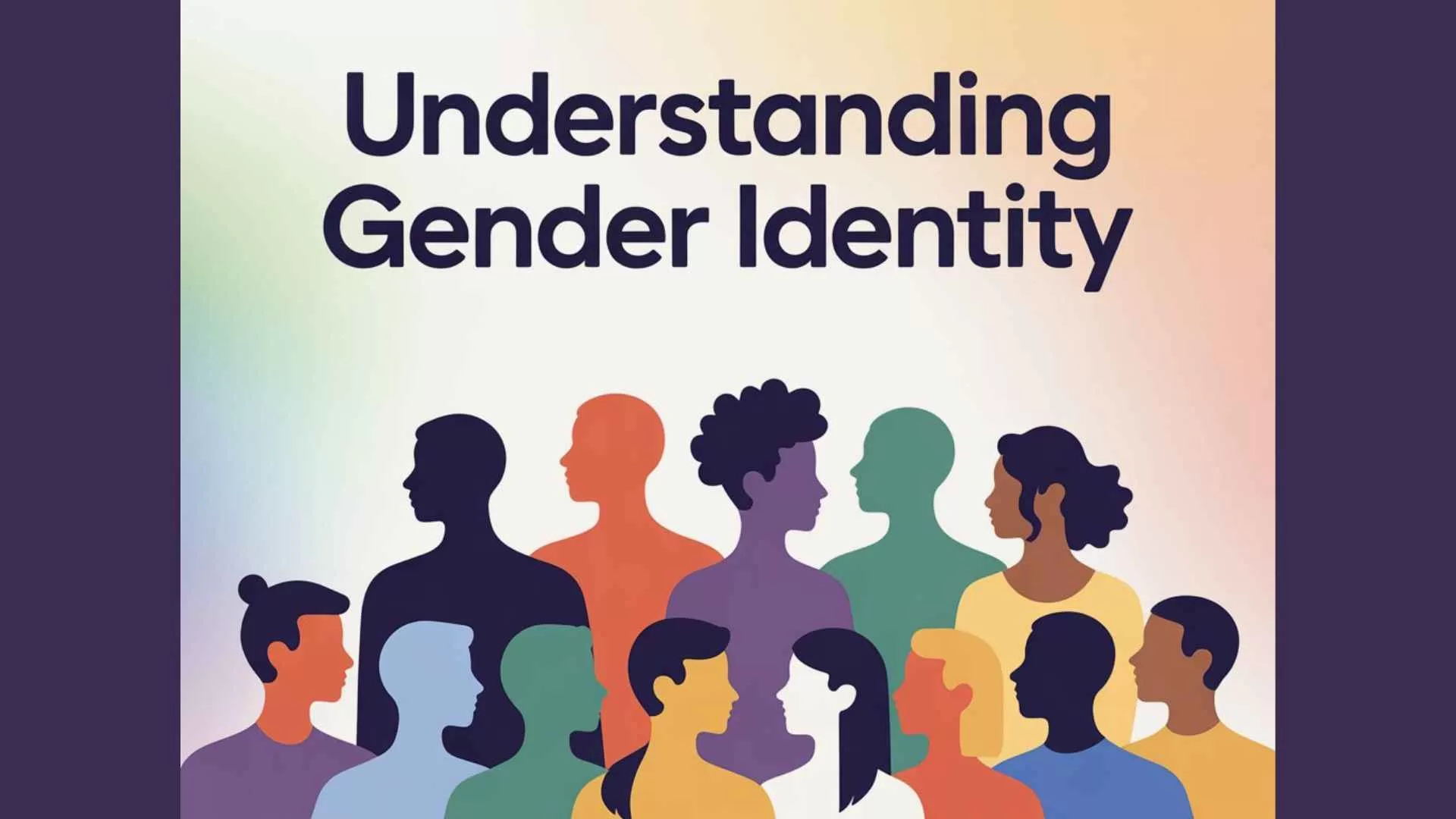Understanding
Contrary to the myth, quite often gender identification is misunderstood. A lot of people correlate it with biological sex, looks, or even behaviour. Actually, it is a very intimate experience that is separate from physical characteristics or sexual orientation. Not understanding or being unaware can cause the victim to be left out, to be uncomfortable, or even to suffer discrimination; thus, the less clear the education is, the more the problem exists.
We will discuss here what gender identity is, its origin and past behind, and even why it is important for the persons and the community to recognise
What Is Gender Identity?
First of all, if we start from the very basics, the one thing you should know is that gender identity concerns an individual’s sense of their own being male, female, or neither. It is an integral part of a person’s nature, very different from the person’s sex, orientation, or even their external side.
Whereas biological sex is about the physical characteristics at birth, gender identity is about someone’s personal experience and understanding of themselves. This singularity is vital for building the right values of respect, being inclusive, and giving the correct representation in
Gender Identity vs Gender Expression
Gender expression shows the way in which a person represents their gender to the outer world, it could be through their clothing, behaviour, voice, or even from other forms of communication. It’s not always perfectly aligned with gender identity. For example, most of these days, a person identifies as a female but expresses themselves in more association with masculinity. Knowing this difference is quite big, it helps prevent assuming and reinforces the idea that identity is internal, while expression is completely external and fluid.
Why the Distinction Matters
Knowing the difference between gender identity and other related concepts lets the communities, educators, and workplaces assist individuals quite effectively. Allowing empathy and reducing the risk of misgendering, stereotyping, or even exclusion. By knowing gender identity as a personal, intrinsic aspect of a personality, society can go above rigid binary classifications and embrace a more inclusive perspective.
Takeaway
In contrast, gender identity is more about having self-recognition and authenticity. While it may not always be truly visible or immediately understood, respecting each person’s identification is essential for creating inclusive, supportive, and equitable environments in school, workplaces, and even in working communities.
The Evolution of Understanding Gender Identity
Periodically, a major chunk of society recognises gender as strictly binary, male or female, nothing else, with clear and proper roles assigned to each of them. These rigid frameworks had their effect on laws, education, and cultural norms, which leaves little room for deviation. People whose identification didn’t align with societal expectations were frequently silenced.
Shifts in Modern Understanding
Over the period of time, perceptions on identity have changed, few changes in psychology, sociology, and medicine have sparked that gender is nothing but a spectrum than a fixed category. Awareness campaigns, research, and advocacy helped challenge a few misconceptions, making it highly clear that gender identity is a personal part of an individual’s identity and deserves a lot of respect.
The Role of Visibility
Representation and public disclosure have played a vital role in shaping contemporary understanding. When individuals openly share their experiences, they provide something that’s more relatable, giving a tough time to the stereotypes and broadening societal perception. Visibility has helped create a language for discussing gender diversity and allowed acceptance in daily life.
Contemporary Recognition
Now, many schools and workplaces are adopting policies to respect gender identity, like inclusive language, recognition of pronouns, and support networks. This process shows a growing recognition that acknowledging gender identity isn’t just a matter of individual respect but also keeping up with societal expectations and preserving mental wellbeing.
Knowing the evolution of gender identity shows that awareness and acceptance aren’t static. They’re part of an ongoing journey that is shaped by culture, education, and even shared experiences, and they continue to show how societies define and respect humans when it comes to diversity.
Why Gender Identity Matters
Promoting Respect and Empathy
Knowing and acknowledging gender identity helps create environments grounded in respect. When individuals are felt, heard, and seen for who they are. It fosters empathy and reduces the likelihood of discrimination. Knowing gender identity is way beyond etiquette; it affirms a person’s sense of self and personal dignity.
Impact on Mental Health and Well-being
Accepting one’s gender identity is inversely proportional to mental and emotional health. Being in a supportive environment can:
- Reduce anxiety, depression, and stress
- Increase self-esteem and confidence.
- Encourage social participation and stronger relationships.
Similarly, ignoring or invalidating someone’s gender can often lead to feelings of being left alone, isolated, distressed, and disconnected from the community.
Significance in Education and Workplaces
Being sound and aware of gender identity is important in schools, universities, and workplaces. Inclusive policies and practices allow institutions to:
- Provide equitable opportunities for all
- Create safe and supportive environments for learning and work.
- Encourage collaboration and open dialogue without fear of judgment
Fostering Broader Social Harmony
Knowing
As a result, identifying and understanding gender identity is a person’s ethical and social duty. By establishing places where people can be their real selves, communities become, with the help of empathy, openness, and mutual understanding, which eventually makes it possible for each individual to grow and
Gender Identity Across Cultures
Understanding Global Diversity
It won’t be wrong to say that gender identity isn’t just a modern concept, nor is it reserved for Western culture; all across the world, many cultures have recognised these identities beyond male and female. This cultural perspective shows that gender diversity is a true fundamental experience, which is embedded in history and tradition.
Examples of Cultural Recognition
Two-Spirit
Fa’afafine (Samoa): A Samoan identity that combines male and female traits, is socially accepted, and is often a significant contributor to the family and cultural
Such samples show that the non-binary and fluid gender identities aren’t a new discovery; they have been acknowledged, respected, and incorporated into a communal life for generations.
Lessons from Cultural Recognition
Knowing how other societies embrace gender diversity can actually help modern communities broaden their perspective. It shows that gender identity is something that is personal and a social reality, not just a recent trend that emerged out of nowhere. By learning from such traditions, societies can easily challenge norms and appreciate the natural call of human nature and its diversity.
Gender Identity Across Cultures
Modern Implications of Historical Practices
Cultural identification of diverse genders has affected contemporary policies and social awareness, where countries with a historical background of third genders usually show more legislation, like recognition on official documents, protections against discrimination, and access to community support systems.
Challenges in Cross-Cultural Understanding
Even though there are examples in history, globalisation and colonial influence have, in some ways, overshadowed and hindered the traditional way of recognizing gender diversity. In numerous areas, culturally accepted identities were substituted by Western binary frameworks, which resulted in the lack of understanding, stigmatization, and exclusion of those people. It is very important to familiarize people with these past events in order to bring back respect and
Cultural Practices That Encourage Acceptance
- Celebrating non-binary roles in festivals and rituals
- Inclusion of third-gender categories in legal and census data
- Representation in media, literature, and education
These practices not only validate personal identity but also enhance social cohesion, reduce marginalisation, and promote acceptance of diversity as a societal value.
Bringing Cultural Lessons into Everyday Life
Through the study of worldwide examples, contemporary societies are able to realize that gender diversity is a biological fact, has been acknowledged historically, and is a significant aspect of culture. The communities become more willing to implement the policies, educational programs, and social norms that are respectful of the gender identities of the individuals.
Such a cross-cultural understanding helps society members to become more empathetic, less biased, and also to treat gender identity issues like any other human right rather than as something
Other Informative Guide:
Top Free Educational Resources for Students
FAQs
What distinguishes biological sex from gender identity?
Biological sex is determined by physical characteristics at birth, whereas gender identity is a person’s inner sense of self.
Does a person’s gender identity shift throughout time?
Indeed, gender identity can be fluid, and people may experiment with it or redefine it over the course of their lives.
In what ways may workplaces foster the gender identities of their staff?
Pronoun identification, inclusive rules, and encouraging workplaces may all help foster inclusion.
Are there cultures that accept more than two genders?
Historically, non-binary identities have been acknowledged in cultures such as the Two-Spirit culture in Indigenous groups and the Hijra culture in South Asia.
In what ways does understanding gender identity contribute to better mental health?
Recognizing and accepting one’s gender identity can lessen stress, worry, and social isolation.
Do sexual orientation and gender identity mean the same thing?
Sexual orientation is about who you’re drawn to, whereas gender identity is about how you see yourself.
What is the significance of gender-inclusive language?
The use of gender-inclusive language demonstrates respect, promotes inclusion, and mitigates bias in conversation.



